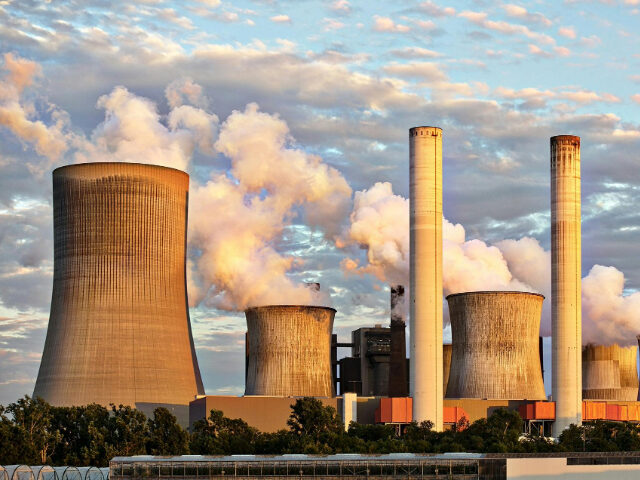The Biden administration signed a Memorandum of Understanding (MOU) with the government of Kenya on Tuesday to help it develop “safe and secure” nuclear power technology.
On the same day, Under Secretary of State for Arms Control and International Security Bonnie Jenkins said she was “delighted to talk about nuclear energy with El Salvador.”
Both of these nuclear dialogues took place on the sidelines of the annual International Atomic Energy Agency (IAEA) conference in Vienna, Austria. The IAEA encourages the “safe, secure, and peaceful use of nuclear energy” by developing countries, in part because it recognizes nuclear power as a clean source of power.
Kenya Prime Cabinet Secretary Musalia Mudavadi gave a speech at the conference on Monday in which he detailed his government’s plans to develop nuclear power over the next decade, a plan the Biden administration’s MOU endorsed the next day.
Mudavadi explained that while Kenya currently employs the full panoply of “green” energy technologies — thermal, hydro, wind, solar, biomass — the country is experiencing a major shortfall in energy generation, and there is no way to fill that gap without nuclear power.
Kenya Nuclear Regulatory Authority (KNRA) Director James Keter thanked the U.S. for its offer of assistance on Tuesday.
“We have a lot in our hands. This MoU could not have come at a better time. We will work with industry leaders and every stakeholder to fortify our regulatory framework to ensure the responsible and effective development of our nuclear programme,” Keter said.
Kenya does not actually have a nuclear power plant yet. The first such facility is scheduled to be constructed in coastal Kilifi County in 2027, over the strenuous objections of environmentalists and locals who fear the project will disrupt the tourism and fishing industries.
The Kilifi nuclear project has been stalled by an environmental lawsuit filed in 2023, which claims the “rushed” and “illegal” process of approving the plant was conducted through “clandestine” meetings. Even if these legal hurdles are overcome, Kenya’s first nuclear plant will not go online until 2034 at the earliest.
El Salvador began its push for nuclear power in 2023, seeking to diversify a grid that heavily depends on hydro and geothermal power. Well over half of the country’s electrical generation currently comes from those two sources.
An Illinois-based nonprofit group called the Thorium Alliance signed an MOU with the Salvadoran government in March 2023 to develop thorium-based nuclear power plants, a newer design whose fuel is easier to obtain than uranium, although extensive processing is required to create useful isotopes from raw thorium.
The IAEA met with representatives from El Salvador in March 2024 to discuss plans for nuclear energy, including “the terminology of nuclear law, key elements of comprehensive national nuclear legislation, and El Salvador’s international obligations as a party to the treaties adopted under IAEA auspices.”
“El Salvador will go nuclear because we have a firm commitment to energy transition, environmental protection, and the economic development of our citizens,” Salvadoran energy and mining director Daniel Alvarez said at that meeting.
El Salvador considered its first-ever participation in the IAEA conference in September to be a “historic moment for the nation” and a “significant stride in its energy future.”
U.S. Deputy Secretary of Energy David Turk said at the conference that America remains fully committed to the peaceful development of nuclear power around the world.
Turk praised nuclear energy for its role in keeping carbon emissions down, even as the world’s need for reliable power increases. He also took the opportunity to condemn nations like Russia and Iran that have refused to fully cooperate with the IAEA and threatened to use nuclear technology for non-peaceful purposes.
The IAEA announced during its annual conference that it expects the world’s nuclear power capacity to increase for the fourth year in a row. Depending on several variables, the IAEA projects worldwide nuclear electrical generation to increase anywhere from 40 percent to 250 percent by 2050.

COMMENTS
Please let us know if you're having issues with commenting.